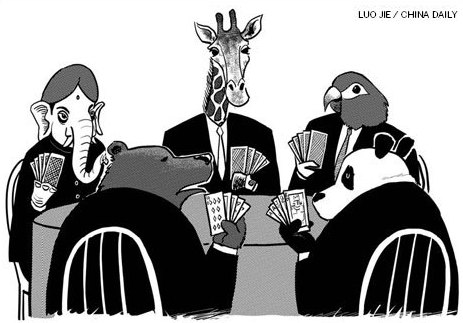Laying BRICS for new edifice

On April 14, President Hu Jintao will meet with Brazilian President Dilma Rousseff, Russian President Dmitry Medvedev, Indian Prime Minister Manmohan Singh and South African President Jacob Zuma. The third formal meeting of BRIC (Brazil, Russia, India, and China) includes South Africa for the first time.
In the past, the advanced economies empowered the world economy. Today, large emerging economies drive global growth. In the emerging world, the future is a source of hope and optimism. In the advanced world, it is often a cause for ambivalence and resignation. In the long run, however, the rise of the large emerging economies is vital to global peace and prosperity.
The concept of the "BRIC" was developed in the early 2000s by Jim O'Neill, then global economist of Goldman Sachs. At the time, these four economies were less than 15 percent of G6 (the United States, Japan, Germany, France, the United Kingdom and Italy) in US dollar terms. Yet projections indicated that by the early 2040s the BRIC economies could be larger than G6. Of course, nothing is inevitable in history. As a group, however, BRIC has emerged from the global credit crisis better than the major economies. As a result, the BRIC economies could become as big as G7 by the early 2030s.













